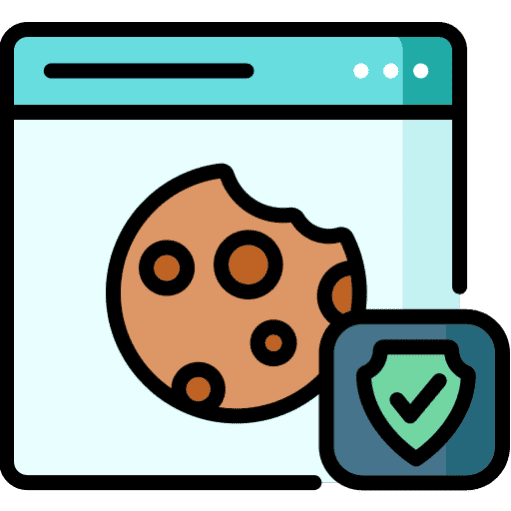Learning is a complex process and every individual is unique in their approach to absorbing, processing and applying knowledge. With the emergence of modern technology, it has become easier than ever to access different types of information and develop our knowledge faster than ever before. However, with so many different sources available, it has also become increasingly difficult to find the best way for each individual to learn.
It’s important to acknowledge that everyone has a distinct style of learning that works best for them. This can be referred to as a “learning type” and understanding your own specific learning type can unlock potential you didn’t know existed. Learning types are not static but rather fluid, meaning they can change over time depending on the environment or circumstances. An effort should be made to recognize what works best for you and use that information to further develop your skillset and acquire new knowledge more efficiently.
The idea behind “learning types” is that there are various methods by which people absorb information based on their own personal aptitudes and preferences. For example, some individuals may prefer visual learning while others may enjoy auditory activities more. Similarly, some people might respond better to kinesthetic stimuli while others may find success through analytical reasoning.
In order to unlock your hidden potential and get the most out of your education, it’s necessary to identify these learning types — as well as their advantages and disadvantages — so that you can make informed decisions about how best to acquire knowledge in the future.
The importance of understanding different types of learning
In today’s world, understanding different types of learning can be the difference between success and failure. For example, a student preparing for an exam must receive training in various types of learning in order to achieve the best possible results. From auditory to visual, from reflective to kinesthetic, each type of learning has its own unique strengths that can be used to maximize performance. We often think of learning as just reading and memorizing information, but it goes much deeper than that. Learning is an active process, involving many mental and physical activities such as problem-solving and creativity. Learning also involves applying knowledge, so that students not only understand what they are being taught but also how to apply it in real-life situations.
In order to truly unlock our hidden potential, we must learn how to learn effectively. We must identify which types of learning work best for us and develop strategies based on those types that will help us get better results in whatever task we are trying to accomplish. Understanding the different types of learning and sharpening our skills within them can give us an advantage over others who have not taken this extra step in their journey toward success.
It is no secret that knowledge is power; however, the ability to process this knowledge quickly and accurately is true mastery. Whether you are trying to master a new language or a complex subject like mathematics or physics, understanding the different styles of learning can help you unlock your inherent potential so you can reach your goals faster and more efficiently than ever before.
Visual Learning
Visual learning is an approach to learning that involves understanding and interpreting information through visual aids. It is a type of cognitive style that relies on the use of images, diagrams, colors, illustrations, and other visual media to aid in the understanding and internalization of new material or concepts. Visual learners prefer to learn by seeing things; they absorb and recall information faster when presented with visual cues.
Visual learners have the ability to perceive complex visual patterns with ease and are able to comprehend difficult concepts better when they are presented in an illustrated form. They are also more likely to remember information if it is presented along with diagrams or graphs. When given a choice between textual content or visual content, they will usually opt for the latter as it helps them make connections easier.
Visual learners excel in activities such as brainstorming ideas based on visuals, creating visual metaphors and analogies, constructing mind maps and flowcharts, designing infographics, drawing storyboards and cartoon strips and reading maps/diagrams quickly. They can also easily identify important points from a presentation by quickly filtering out unnecessary details.
One way for visual learners to effectively learn is by using mind mapping techniques where relationships between concepts can be clearly seen at a glance. Mind mapping involves connecting key ideas together using lines to represent their relationship visually, thus helping the learner make concrete connections between each concept. It also allows them to break down complex tasks into smaller steps so that it’s easier to tackle each step separately while still having a clear view of how all the elements fit together as a whole.
Other useful techniques include highlighting key text passages in different colors according to their importance or relevance (for example yellow for main points and blue for supporting evidence), taking notes in sketchbooks or charts/graphs instead of typing them out on paper, creating color-coded index cards to reinforce learning points, etc.
Visual learners should also try writing summaries of what they have learned via drawings or sketches rather than words whenever possible as this helps them retain information better due to its combination of visual cues along with textual ones.
Benefits and drawbacks of visual learning
The benefits of visual learning are numerous; it allows learners to absorb information quickly, remember it for longer periods of time, and recall it easily later on. Visuals also serve to break down complex concepts into simpler ones that can be easily understood at a glance. Furthermore, visuals enable learners to explore different perspectives on a given topic and gain a deeper understanding by combining disparate pieces of information into more meaningful wholes.
However, there are some drawbacks to visual learning as well. For example, learners may sometimes fail to interpret visuals accurately or take too long to decide what data they need from them due to their complexity or lack of clarity. Additionally, visuals might be insufficient if the learner is attempting something new that requires tactile feedback as opposed to just looking at a diagram or picture.
Overdependence on visuals can also lead learners to rely too heavily on memorizing images instead of developing analytical skills or taking initiative in their own research efforts.
Auditory Learning
Auditory learning involves listening to a lesson or lecture and then processing it within your own mind. It is often considered one of the most popular and effective methods of teaching, as it allows students to absorb information at their own pace while still receiving valuable instruction from an experienced teacher or lecturer. This method of learning relies on spoken communication, creating a more interactive atmosphere than reading on your own.
Benefits of auditory learning include being able to absorb information quickly and accurately, as well as being able to repeat back concepts that have been discussed without having written them down. The interpersonal dynamic also makes this type of learning engaging and enjoyable for many people.
The ability to listen effectively is key for auditory learners; taking notes during lectures is a great way to ensure you don’t forget key points or miss any small details related to the material being taught. Additionally, asking questions during discussion sessions will maximize understanding and help retain information better over the long term.
Maintaining an inquisitive attitude is also beneficial when trying to understand concepts that are taught through an auditory approach; if something isn’t clear, it’s important not to be afraid to ask questions in order to get a better grasp on what you’ve heard. Additionally, actively engaging with classmates whenever possible will allow you to explore different viewpoints on topics that are discussed and gain insight into various interpretations based on individual experiences.
Overall, auditory learning offers many advantages for those who take advantage of it—from improved comprehension capabilities, increased social interaction opportunities and developed critical thinking skills—making it a highly effective tool when attempting new challenges in life or anywhere else.
Examples of how to use auditory techniques to learn more effectively
Many people believe that they are either visual, auditory or tactile learners. While this can be true, the reality is that everyone is actually a combination of all three. One way to better understand how to use a specific learning style to your advantage is by looking at examples of how individuals have used auditory techniques to learn more effectively in different areas of their lives.
School Learning: Auditory learners excel in higher education because they can clearly recall and recite details from lectures and classes they’ve heard multiple times. They have an easier time picking up new material from instructors and taking notes during class time so that they can better recall what was taught afterward.
Student Learning: Students with hearing impairments present unique challenges for teachers. However, some techniques teachers have found effective include allowing students to record classroom lectures, as well as providing audiobooks instead of physical copies of text-based materials for their assignments. Additionally, allowing students with hearing impairments to sit closer to the front of the classroom where conversations may be more easily heard will help them stay on top of their course load.
Business Training: In the corporate world, leaders often run workshops or seminars geared towards employees’ professional desarrollo in which verbal instructions are given on how best to do certain tasks or take on projects. Auditory learners naturally process this information quickly as they’re able to remember specifics from each segment much easier than those who learn differently.
General Learning: Outside of school or work you may hear someone giving instructions on something at home such as how to prepare a meal or assemble furniture properly while speaking the steps out loud and paying attention to the sound of the words being said rather than engaging visually with another person’s movements or reading written instructions of a page. In this situation, an auditory learner could comprehend faster simply by listening and recalling than if he had been presented with visual cues instead.
Kinesthetic Learning
Kinesthetic learning is a form of learning that involves the use of physical movement and tactile experiences in order to aid and enhance the learning process. Unlike other forms of learning, kinesthetic learning focuses on the body’s physical experience with the material being studied. This form of learning is often used in physical education or athletics-related activities, but it can be applied to virtually any subject.
The main benefit of kinesthetic learning is that it combines physical and mental processes, resulting in an enhanced understanding and retention rate of the topic at hand. Since there are so many physical components to kinesthetic learners, it also aids in developing problem-solving skills, as well as enhancing motor coordination and balance. In addition, it has been shown that when students are actively engaged in this form of learning they tend to pay more attention and remain engaged longer than those who do not.
When using kinesthetic learning in a classroom setting it is important to ensure that all students have the opportunity to participate and learn at their own pace. Every student learns differently, so providing them with multiple ways to engage with the materials will help ensure that everyone is able to access the same information. For example, some students may need visuals such as pictures or video clips while others may prefer auditory methods such as lectures or discussion groups. Additionally, tactile activities such as building models or doing hands-on experiments can greatly enhance a student’s understanding of complex ideas or topics.
In summary, kinesthetic learning can be a great tool for educators as well as learners by encouraging creativity and providing opportunities for individualized instruction. Not only does this approach result in better absorption rates for students, but also assists them in developing problem-solving skills which will be beneficial throughout life.
Tips on using kinesthetic methods to maximize efficiency
Kinesthetic learning is a style of learning that utilizes physical activities and movements to help the learner internalize the material they are studying. It is often used in combination with visual and auditory methods, as kinesthetic learners often need additional sensory input in order to understand concepts. Kinesthetic learners typically excel at problem-solving and hands-on activities due to their ability to learn by doing.
One of the most effective ways for kinesthetic learners to make use of their skills is by incorporating physical activities into their study time. This can be as simple as taking short breaks throughout a study session to jog or walk around or write down key concepts in large letters on a whiteboard or chalkboard. In addition, engaging in physical activities such as jigsaw puzzles, dance moves, martial arts, yoga poses, or rock climbing can help kinesthetic learners recall information more readily than traditional methods of studying alone.
For those who prefer a more interactive approach to learning, role-playing games may be an ideal way for kinesthetic learners to remember key concepts while still having fun with peers. Group tasks like scavenger hunts or building something out of random objects also provide an opportunity for additional input and feedback from others. The difficulty of these tasks can vary depending on the complexity of the concept being studied and the level of difficulty desired by the student.
Finally, language plays an important part in how kinesthetic learners absorb information. Using words like “feel”, “touch” and “grasping” can help them form mental images quickly and understand concepts better through physical analogy rather than abstract thinking alone.
Additionally, brainstorming ideas out loud is another way for kinesthetic learners to connect what they learn to real-life experiences through conversation with others which serves as another method for them to explore new ideas visually and auditorily as well as physically.
Analytical Learning
Analytical learning provides students with a comprehensive framework for understanding complex topics and breaking down difficult concepts. It involves critical thinking, problem-solving, and reasoning skills that are essential in many college courses as well as in Fortune 500 boardrooms. By taking time to analyze data and evidence, students will be better equipped to make informed decisions.
Analytical learning can be used both in academic settings and across other domains such as business, engineering, science, entrepreneurship, or politics. It allows the learner to question assumptions, draw conclusions from facts or trends, think independently without relying on existing knowledge or predetermined solutions to problems, and use tools like logic and deductive reasoning to uncover new insights about any given subject matter.
At its core, analytical learning encourages learners to explore all angles of an issue before coming up with their own theories or hypotheses about what is best for the situation at hand. This means that rather than simply memorizing formulas or facts regarding certain topics – which only serves them a surface-level understanding – analytical learners break down bigger-picture themes into smaller pieces so they can more deeply understand the material at hand. They research ideas from multiple sources and weigh different points of view instead of relying on one single source of information.
By doing this type of deep diving into any subject matter that interests them—be it a hobby like bird watching or something more formal like programming languages—students gain valuable skills that prepare them for life outside the classroom walls. Analytical thinking helps students form better arguments when discussing controversial issues or debating opposing viewpoints while also giving them an edge in fields such as business management where decision-making based on hard data is often required. The ability to approach any situation with an analytical mindset ultimately gives learners greater control over their environment by giving them a greater understanding of their surroundings and enabling them to anticipate possible outcomes.
Techniques for honing analytical skills and powers of deduction
One of the key techniques for honing analytical skills and powers of deduction is to constantly practice problem-solving. It is important to challenge yourself and your thoughts on a regular basis in order to become more adept at understanding complex topics and finding meaningful solutions. Evaluating data, discovering patterns, developing arguments and testing hypotheses—all of these are important parts of the analytical process that can be improved with consistent practice.
To become a skilled analytical thinker, it’s also important to focus on effective research methods. Developing an efficient approach to gathering knowledge will help you narrow down relevant sources and form reliable conclusions quickly. To do this, it’s essential to cultivate good note-taking habits as well as staying organized while reading or reviewing the material. Taking notes also encourages reflection by thinking about how one piece of information might connect or complement another part of the problem being considered.
Another way to strengthen analytical skills is by actively seeking out new perspectives on any particular subject matter. This means going beyond the first set of information that comes up during a web search or looking outside one’s comfort zone when considering different points of view. Experimenting with different learning strategies—such as audio recordings, visual diagrams, physical demonstrations, etc.—can also prove beneficial in helping learners better understand complex concepts.
It’s also beneficial for learners to take advantage of reflective and feedback-based activities such as journaling or discussing their ideas with peers in order further enhance their deductive reasoning powers. Here they can not only revisit concepts from multiple angles but also gain insight from others who may have different approaches than theirs on the same subject matter. Finally, studying classic works on logic such as Aristotle’s Organon or John Locke’s An Essay Concerning Human Understanding can provide valuable insight into sound arguments and proper use of logical fallacies.
Reflective Learning
Reflective learning is a type of learning that encourages individuals to take the time to reflect on their experiences and internalize what they have learned. This means that rather than simply memorizing facts or figuring out how something works, reflective learners think deeply about the ideas and topics they are exploring. Unlike analytical or kinesthetic learning, reflective learning involves taking a step back from direct action and looking at the overall picture. It requires learners to question their assumptions, draw connections between different topics, and evaluate the situation at hand in order to gain insight.
Reflective learning helps individuals develop critical thinking skills that can be applied in any number of situations. Through self-reflection and contemplation, learners are able to gain an understanding of a given topic that goes beyond the surface level and can be seen as more than just another task or assignment. Reflective learning also encourages creativity by giving learners the chance to explore new ways of approaching a problem or subject matter.
In addition, reflective learning is beneficial for improving communication skills. By forcing learners to take an honest look at themselves and their thoughts, feelings, and opinions regarding various issues, they become better able to articulate those thoughts in a clear and concise way when discussing with others. Furthermore, this type of learning is valuable for developing empathy as it leads individuals to consider how their actions may impact those around them.
Overall, reflective learning can be highly beneficial for anyone looking to further develop their critical thinking skills and expand their understanding of important concepts and topics. By taking the time to pause and reflect on the information they’ve gathered over time, people can gain greater insight than ever before into both personal experiences as well as larger subjects such as political science or history.
Strategies for developing reflective thinking capabilities
Developing reflective thinking requires time and practice. There are several strategies that can help cultivate the skills necessary for successful reflective learning.
First, it is important to carve out some time each day to focus on the reflective process. Although this may seem daunting due to busy day-to-day schedules, even a few minutes spent reflecting can make a big difference in the long run. It is helpful to choose a specific activity that fosters reflection such as reading or journaling, as these activities provide an opportunity to actively engage with ideas and information in order to gain further insight into them.
Another key component of developing reflective thinking is questioning oneself. By asking “why” and “how” regarding different subjects, individuals can increase their level of understanding and discover new perspectives on what they are learning. Additionally, it is beneficial to challenge any assumptions one may have about certain topics in order to avoid unhelpful biases or conclusions. This can help learners better comprehend why certain situations arose and how they could have been handled differently in order to prevent similar issues from happening again in the future.
Critical analysis is another essential element of reflective thinking. Rather than taking things at face value or accepting them outright, learners should instead think critically about what they are facing and consider potential implications from multiple angles. This helps broaden the scope of one’s reasoning power while also allowing deeper insights into various topics of study.
Finally, creating connections between different concepts by looking back at prior lessons or experiences can be hugely beneficial for improving reflective thinking capabilities. Seeing how prior knowledge relates to current tasks helps create more comprehensive mental images which can provide clarity during times of confusion and ultimately lead to enhanced problem-solving skills over time.
How to find out which learning style is best for you
Are you feeling unsure about how to identify your learning style? Are you feeling overwhelmed by the different variations of learning styles?
It can be confusing trying to figure out which type of learner you are, as there are so many types – visual, auditory, kinesthetic, analytical and reflective. Fortunately, there are some straightforward methods that you can use to identify your own unique learning style.
First things first: reflect on what activities bring you joy and satisfaction. Do you love using images or graphics to learn new concepts? Perhaps reading long texts helps you to stay focused and retain information better. Have you noticed that when reading aloud or participating in group discussions it helps you understand the material more easily? It’s important to pay attention to these preferences – they could be indications of which type of learner you are.
Another way to discover your learning style is by paying close attention to language patterns. This will help give clues as to which type of learner you are. For example, if your writing reflects strong visualization skills, then chances are that’s a hint at what kind of learning style would work best for you. If you like to speak or write in a visual style using words that create mental images, then it’s likely that you are a visual learner. If you have a speaking or writing style that involves a lot of emotional words, like “excited” or “enthused”, then it is likely that you may lean towards being a kinesthetic learner.
Taking an assessment is another effective way to identify your learning style. There are plenty of free assessments out there on the web and they can offer valuable insights into how you best process information. By answering specific questions about yourself and your preferences, these assessments can help you get a better idea of which type of learner you are.
Additionally, look for favorite activities that involve creative thinking and problem solving as this may point towards a preference for an analytical or reflective approach.
Finally, try considering personal traits such as being attuned to symbols or having an affinity towards music – these can give further hints as to your preferred technique when it comes to effective learning.
Though only one method can be used to identify a person’s own particular learning style – the combination of the methods described above puts even the most novice learner well on their way toward becoming an expert in their own field. By understanding your own strengths and weaknesses in terms of how you process information, you have the potential for success no matter what educational endeavor you undertake.























